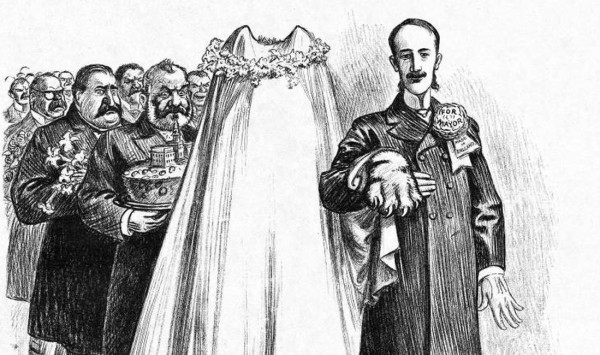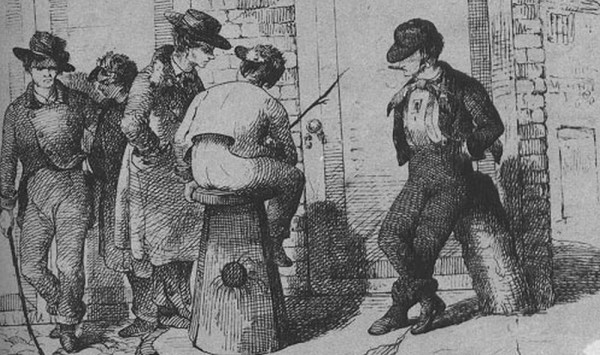HE KNOWS HIS JEWELS ARE SAFE (1892)

******************************************************************************************************************************** Brownstone Detectives investigates the history of our clients’ homes. The story you are about to read was composed from research conducted in the course of one of those investigations. Do you know the history of YOUR house? ******************************************************************************************************************************** When the daughter of a Tammany Hall “boss” is married, how does the new son-in-law protect their wedding gifts? By installing a jewel vault in the cellar of his brownstone, of course! THE JEWEL VAULT ON WASHINGTON PARK When Dr. Alexander F. Carroll married the eldest daughter of Brooklyn Democratic Boss, Hugh McLaughlin, in 1890, the New York Times reported that the “wedding gifts were of the most costly and elaborate nature.” “So valuable were they,” New York’s paper of record continued, “that when Mr. and Mrs. Carroll moved to their Washington Park home they had a great burglar-proof vault built under the sidewalk.” Apparently, all of the Boss’s numerous friends and supporters “remembered the happy couple substantially” which presented them with a good problem to have – how to safeguard their extreme amount of new-found jewel wealth. A list of the bridal presents “covered three columns in the Eagle,” noted The New York Sun, the presenters of which included then-President Cleveland. The value of the gifts were variously estimated at “from $100,000 to $200,000.” Mrs. Carroll was “very much worried because she has had to keep the mass of gold and silver received at the time of her marriage in the house and has had private detectives watching the premises.” […]
THE HIPSTERS OF WARTIME FORT GREENE (1864)

******************************************************************************************************************************** Brownstone Detectives investigates the history of our clients’ homes. The story you are about to read was composed from research conducted in the course of one of those investigations. Do you know the history of YOUR house? ******************************************************************************************************************************** “I lean and loafe at my ease observing a spear of summer grass.” Walt Whitman wrote this line at the beginning of the poem that later became “Song of Myself.” Whitman was a self-styled loafer. And, in the mid-1800s, loaferism was not a very popular pastime – excepting, of course, with the loafers. Loafers, to bring the term into a modern day focus, were the rowdy hipsters of their times – non-conforming, proudly different, and not at all afraid to show it. “…(T)he age abounded in loafers. There were literary loafers, Yankee loafers, French loafers, genteel loafers, common loafers, and country loafers, among others…” noted Michael Zakim a paper entitled, The Business Clerk as Social Revolutionary; or, a Labor History of the Nonproducing Class. “(L)oaferism was essentially a metropolitan phenomenon,” he continued, “haunting the city’s sidewalks, wharves, museums, and parks, and serving as a ready epithet for anyone needing to hurl an insult.” And insults and rowdyism seemed to be what they did best. The newspapers are filled in ante- and post-bellum times of accounts of loafers, how bad they were, and what the good, upright, and moral citizens were to do about them. “Loafers were known for cursing without shame and for smoking cigars,” Zakim noted. “They cared little for […]